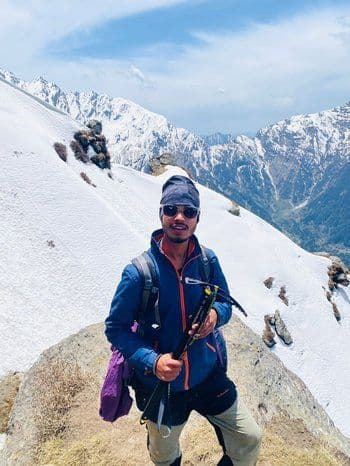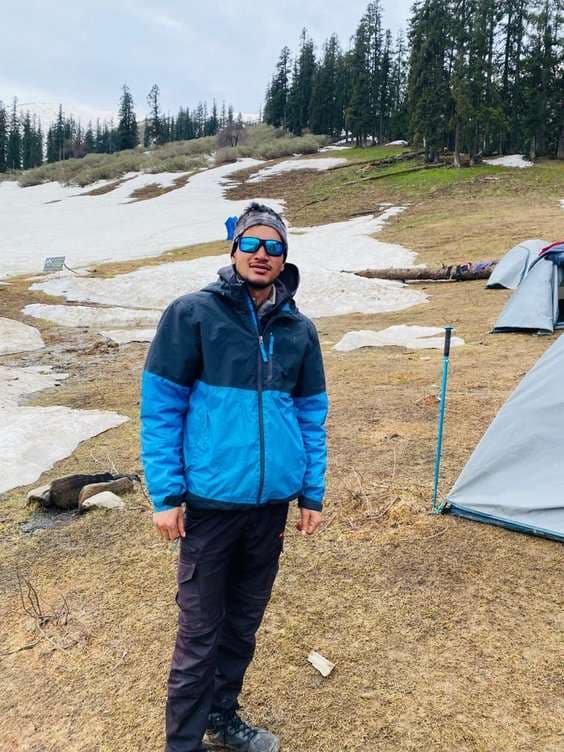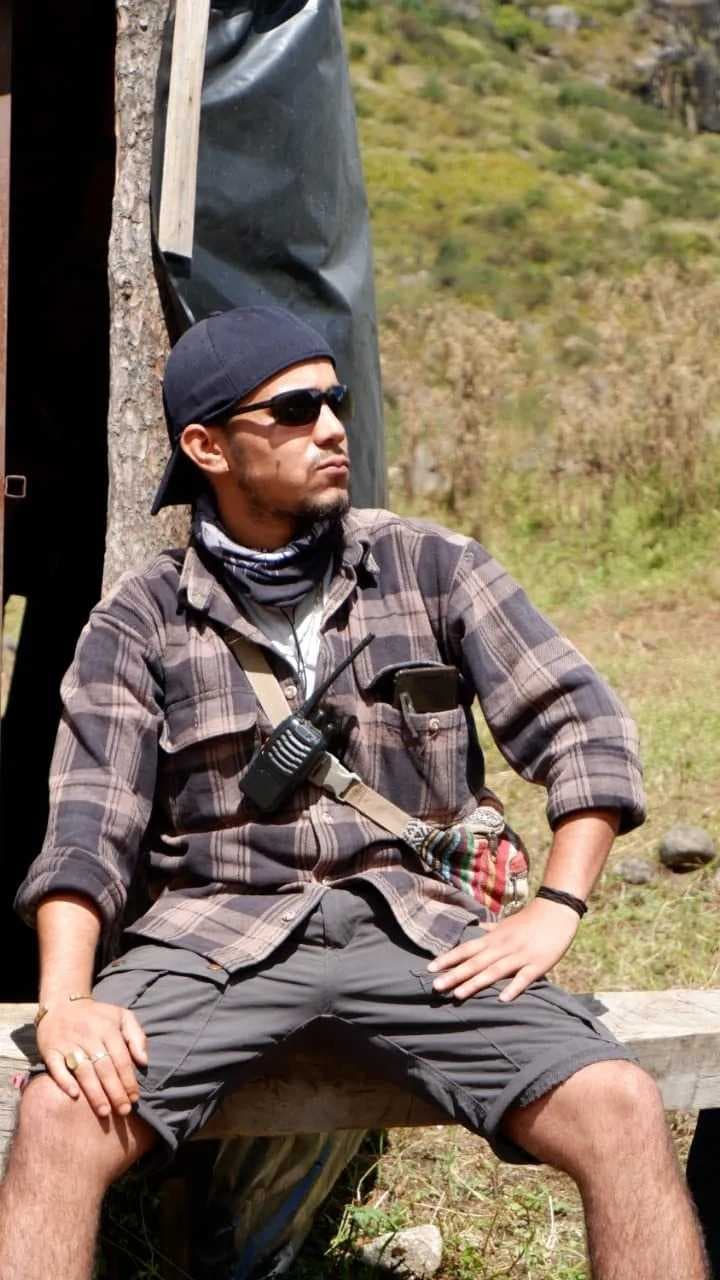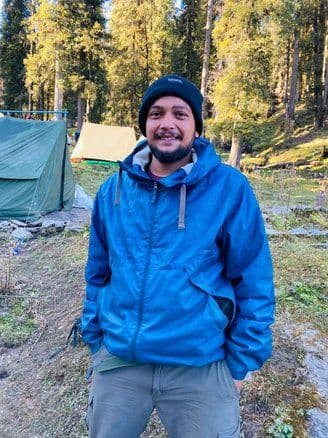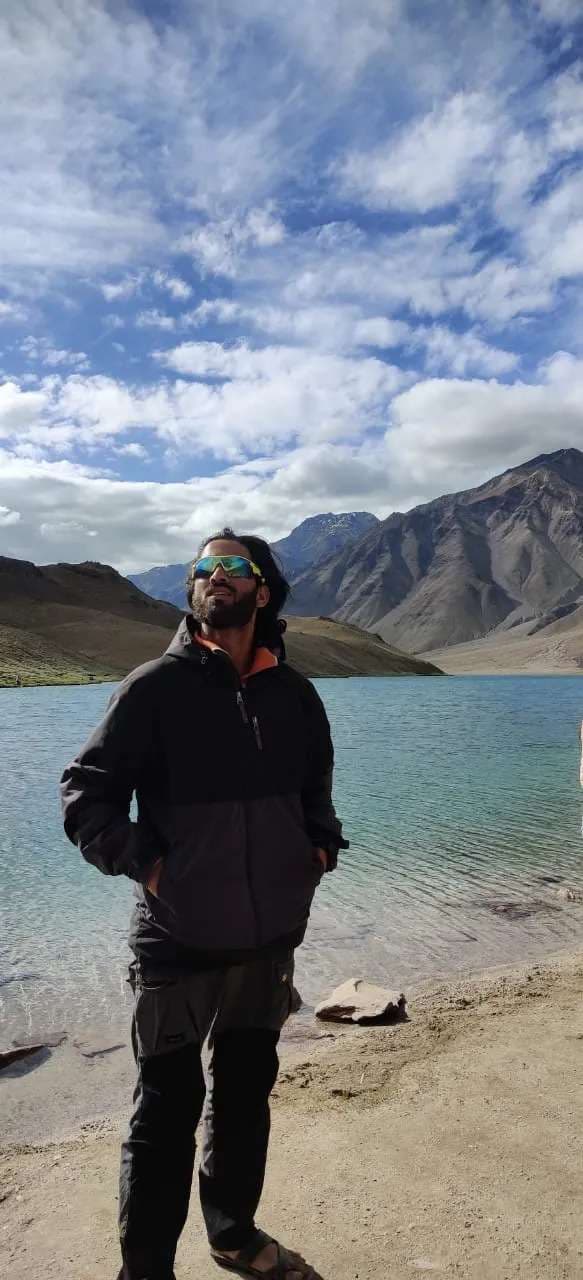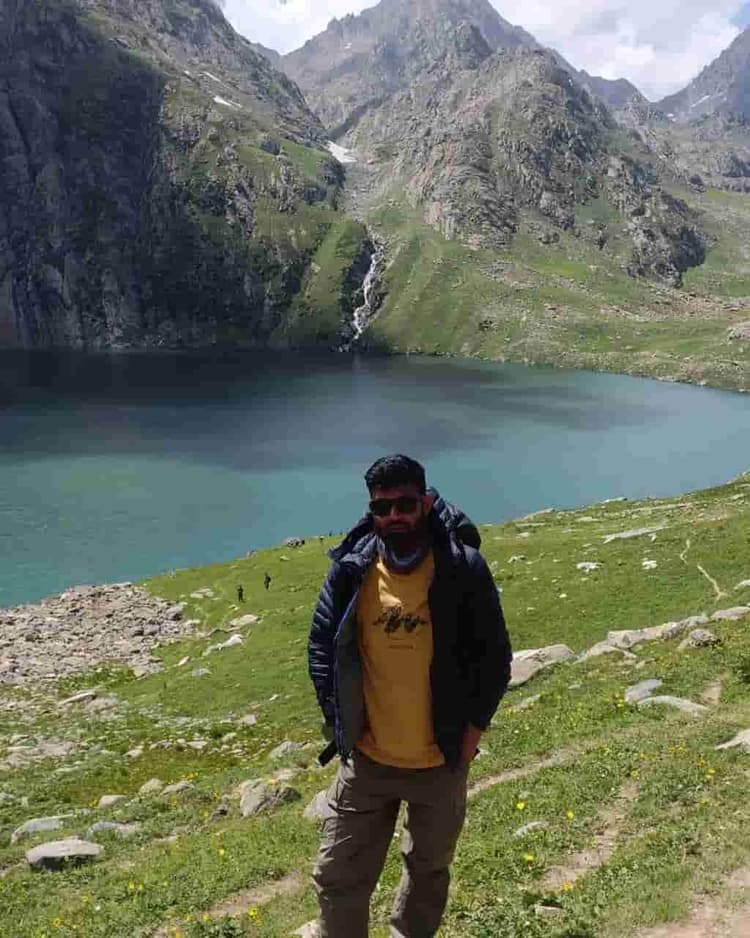The Do Dham Yatra is a pilgrimage journey to two sacred Hindu shrines among the Char Dham sites in the Uttarakhand region of India. The most common combinations for the Do Dham Yatra are Badrinath and Kedarnath.
The Badrinath Temple is dedicated to the Lord Vishnu who is one of the 108 Divya Desams mentioned in ancient Hindu scriptures. It is located in a height of 3,133 meters (10,279 feet) in the Garhwal Himalayas along the Alaknanda River, Badrinath is considered one of the holiest places where Lord Vishnu meditated as Badrinarayan. Adi Shankaracharya is believed to have discovered the idol of Lord Badrinath from the Alaknanda River and established it in the temple. Open for approximately six months each year, from late April or early May to early November, the temple's closing date usually coincides with Diwali.
Pilgrims often visit Badrinath after other Char Dham sites, such as Yamunotri, Gangotri, and Kedarnath, as part of the Char Dham Yatra. Nearby attractions include Mana Village, the last inhabited village before the border with Tibet, known for its scenic beauty and cultural significance, and Vyas Gufa, a cave where Sage Vyas is believed to have composed the Mahabharata. Majestic snow-clad peaks, including Nilkantha, Nar Parvat, and Neelkanth, surround Badrinath.
The nearest airport to Badrinath is the Jolly Grant Airport in Dehradun, and the nearest railway station is Rishikesh. Road travel is required to reach Badrinath from these points. There are various accommodation options in and around Badrinath, ranging from guesthouses to Dharamshala (religious rest houses). Booking accommodations in advance during the pilgrimage season is advisable. Badrinath also hosts the Maha Kumbh Mela every 12 years, and other festivals, including the Badri-Kedar Festival, are celebrated with grandeur. Pilgrims visit Badrinath not only for its religious significance but also to experience the natural beauty and tranquillity of the Himalayas. The journey involves challenging mountainous terrain, and adequate preparation is recommended for a safe and fulfilling pilgrimage.
Kedarnath, located in the Rudraprayag district of Uttarakhand. It is a pilgrimage site which is dedicated to Lord Shiva. It is in the one of the Char Dham pilgrimage sites, Kedarnath holds significant religious and cultural importance. The Kedarnath Temple is come under one of the 12 Jyotirlingas, which is situated at an altitude of 3,583 meters (11,755 feet) in the Garhwal Himalayas. According to Hindu mythology, Kedarnath is where Lord Shiva granted the Pandavas redemption after the Kurukshetra war.
The Kedarnath Temple is open from late April or early May to October or November, depending on weather conditions. Pilgrims often embark on the Char Dham Yatra, including visits to Yamunotri, Gangotri, Kedarnath, and Badrinath. The traditional trekking route to Kedarnath starts from Gaurikund, covering approximately 19 kilometres. The trek is considered sacred by devotees and offers breathtaking views of the lush meadows, Himalayan landscapes, and the Mandakini River.
The nearest airport to Kedarnath is Jolly Grant Airport in Dehradun, and the Rishikesh is the nearest railway station. From these points, road travel is required to reach Gaurikund to start the base for the trek to Kedarnath. Pilgrims can find various accommodation options in Kedarnath, including guesthouses and dharamshalas (religious rest houses). Due to the challenging terrain, basic facilities are available. Maha Shivaratri is one of the major festivals celebrated at Kedarnath with devotion and enthusiasm. Kedarnath attracts pilgrims, trekkers, and nature enthusiasts alike. The journey to Kedarnath involves challenging terrain and high altitudes, so adequate preparation and consideration of weather conditions are essential for a safe and fulfilling pilgrimage experience.
The Do Dham Yatra is spiritually significant, with many devotees undertaking this pilgrimage to seek blessings and cleanse themselves of sins. The journey involves travel through scenic landscapes and challenging terrains in the Himalayan region.
Best Time For Do Dham Yatra
May to June: This period marks the peak summer season when the weather is conducive to travel, making it the best time for Do Dham Yatra. Both Badrinath and Kedarnath are accessible during these months, with moderate temperatures, enhancing the comfort level for pilgrims embarking on the Do Dham Yatra.
September to October: This is the favorable post-monsoon period for the Do Dham Yatra package, particularly for Badrinath and Kedarnath. The weather is more apparent, and the Himalayan landscapes are stunningly lush, making it an ideal time for those seeking spiritual and scenic experiences during their Do Dham Yatra itinerary.
It is crucial to avoid the winter months from November to April, as heavy snowfall and extreme cold can make the routes to the Do Dham Yatra sites inaccessible and hazardous. Similarly, the monsoon season from July to August should be avoided because of the more significant dangers of landslides and heavy rainfall.
Always check the latest Do Dham Yatra weather updates, road conditions, and the operational status of the pilgrimage sites before planning your journey. Consulting local authorities or travel experts is advisable for a safe and well-planned pilgrimage.
Difficulty Level of Do Dham Yatra
The difficulty level of the Do Dham Yatra varies depending on the combination of shrines visited, particularly Badrinath and Kedarnath, and the mode of transportation used.
Trekking Involvement: Trekking routes like those to Kedarnath significantly increase difficulty. The mountainous terrain demands good physical condition and preparedness for uphill climbs at varying altitudes.
Altitude and Weather: The pilgrimage sites' high altitudes pose risks of altitude sickness. Weather factors like heavy rains or snowfall further influence the Do Dham Yatra's difficulty level.
Road Conditions: The journey involves traversing roads that may feature challenging terrains, narrow paths, or sharp bends, adding to the complexity of the pilgrimage.
Accommodation and Facilities: The availability and quality of accommodations and basic amenities along the route impact the ease of the pilgrimage. Better facilities can enhance comfort, influencing the overall Do Dham Yatra experience.
Seasonal Considerations: Choosing the right time for the pilgrimage, such as avoiding winter and monsoon seasons, is crucial due to potential snow, cold, or landslide risks.
For those embarking on this sacred journey, being physically fit, adequately prepared with the proper clothing, and acclimatized to higher altitudes are essential. Service providers offering trekking and outdoor activities should ensure their clients are well-informed about the specific challenges and equipped for a fulfilling experience during the Do Dham Yatra.
Safety Considerations for a Secure Do Dham Yatra Experience
Embarking on the Do Dham Yatra is not just a spiritual journey but also a challenge due to the Himalayas' demanding terrains and extreme weather conditions. Ensuring safety is paramount, so here are some essential tips to help you prepare:
Physical Fitness and Acclimatization
Physical Fitness: Be in good health before your journey. Regularly engage in strength and cardiovascular training to prepare for the Do Dham Yatra's physical demands, especially if trekking to Kedarnath is involved.
Acclimatization: Gradually acclimatize to the high altitudes of Badrinath and Kedarnath to avoid altitude sickness. Allow your body to adjust by spending a few days at intermediate elevations.
Weather Preparedness and Appropriate Clothing
Weather Awareness: Regularly check the Do Dham Yatra weather updates. Carry appropriate clothing, such as warm layers and rain gear, and be ready for sudden changes in the weather.
Appropriate Clothing: Ensure comfortable trekking shoes with ankle support and versatile clothing for all conditions, reflecting the Do Dham Yatra temperature fluctuations.
Nutrition, Hydration, and Travel Arrangements
Hydration and Nutrition: High altitudes can cause dehydration. Carry a reusable water bottle and energy-rich snacks to maintain stamina during treks.
Travel Arrangements: Plan your Do Dham Yatra itinerary meticulously, considering the route map, transportation modes, and trekking distances. Verify the operational status of roads, especially during the Do Dham Yatra, from May to October.
Permits, Documentation, and Emergency Preparedness
Permits and Documentation: Secure all necessary Do Dham Yatra permits and keep valid ID proof with copies of essential documents. Include details of your Do Dham Yatra booking and accommodation.
Emergency Contacts: Prepare a list of nearby emergency numbers and emergency contacts. Share your Do Dham Yatra package itinerary with family or friends.
Provide a First Aid Kit: A kit containing drugs for common illnesses and altitude sickness should be included.
Guidance and Communication
Guided Tours: For novice trekkers, consider booking a guided Do Dham Yatra package with experienced professionals familiar with the local terrain and safety protocols.
Communication: To ensure connectivity, keep your mobile phone charged with a power bank. Learn basic map-reading skills and use navigation apps.
Additional Safety Tips
Safety Gear: Utilize safety gear like trekking poles, sturdy footwear, and headlamps for better visibility during early morning or late evening treks.
Cultural Sensitivity: Respect the local customs and follow guidelines for behavior at sacred sites.
Environmental Considerations: Practice responsible trekking by minimizing environmental impact. Ensure all waste is correctly disposed of.
Insurance and Health
Travel Insurance: Choose travel insurance that covers health issues, including altitude sickness and unforeseen trip cancellations.
Altitude Sickness: Be aware, Know when to seek medical attention, and be able to identify the symptoms of altitude sickness. Ascend slowly and steadily.















































